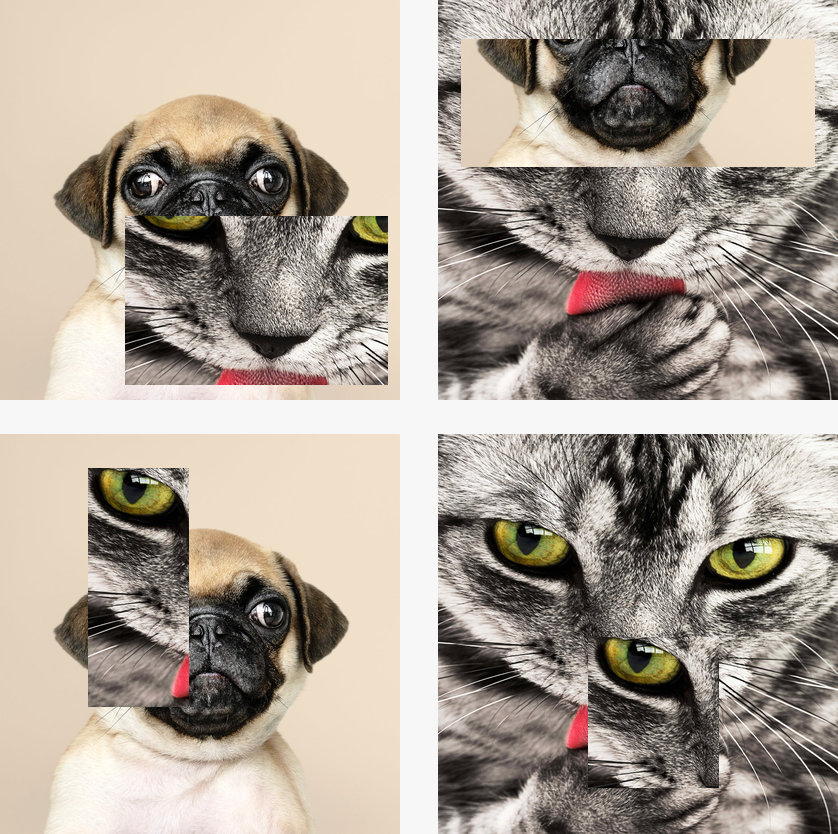Patch Augmentation
Patch Augmentation is an novel image augmentation technique designed to improve model generalisation and mitigate against adversarial attacks.
For details, see the following pre-print: Patch augmentation: Towards efficient decision boundaries for neural networks, arXiv:1911.07922, Nov. 2019, https://arxiv.org/abs/1911.07922
How it works
Patch Augmentation is a data-independent approach that creates new image data based on image/label pairs, where a patch from one of the two images in the pair is superimposed on to the other image, creating a new augmented sample.
Below is a visual example of the technique:
The augmented image label is a combination of the image pair's original labels. The labels for the dog and cat classes are [1.0, 0.0] and [0.0, 1.0] respectively. Clockwise from the upper left, the augmented image's labels are [0.72220625, 0.27779375], [0.2832, 0.7168], [0.0, 1.0], and [0.918925, 0.081075] respectively.
A notebook containing a reproducible experiment (training ResNet20v1 using the CIFAR-100 data set) can be found in the following notebook:
Patch-Augmentation-CIFAR-100.ipynb
In the notebook above, Patch Augmentation improves a baseline accuracy of about 45% to over 61%.
The table below shows the technique being applied to several data sets and network architectures (test set accuracy):
| Dataset | Model | No Augmentation | Patch Augmentation |
|---|---|---|---|
| CIFAR-10 | ResNet20v1 | 80.86% | 89.33% |
| ResNet29v2 | 83.15% | 91.19% | |
| CIFAR-100 | ResNet20v1 | 44.08% | 61.41% |
| ResNet29v2 | 52.21% | 68.06% |
Robustness Against Adversarial Attacks
Initial experiments show networks trained with Patch Augmentation are more robust to adversarial attacks, see the following notebook for details:
Using the Fast Gradient Sign Method to create adversarial examples, the network trained with Patch Augmentation had an accuracy of 72.5% versus 64.3% compared to the network trained without augmentation.
Publication
Publication in review.
Pre-print available here: Patch augmentation: Towards efficient decision boundaries for neural networks, arXiv:1911.07922, Nov. 2019, https://arxiv.org/abs/1911.07922
Repository made public on the 25th of October 2019.
